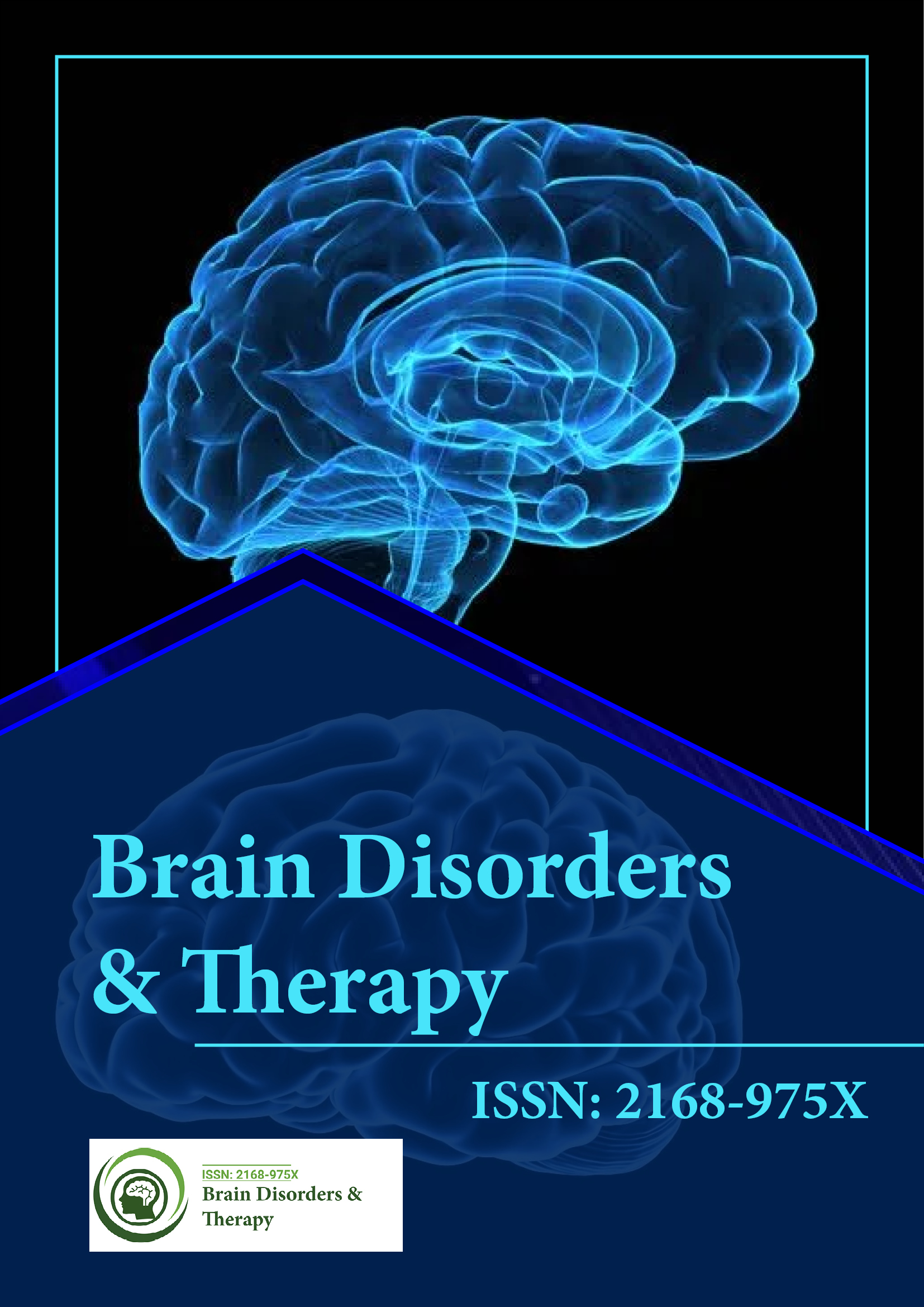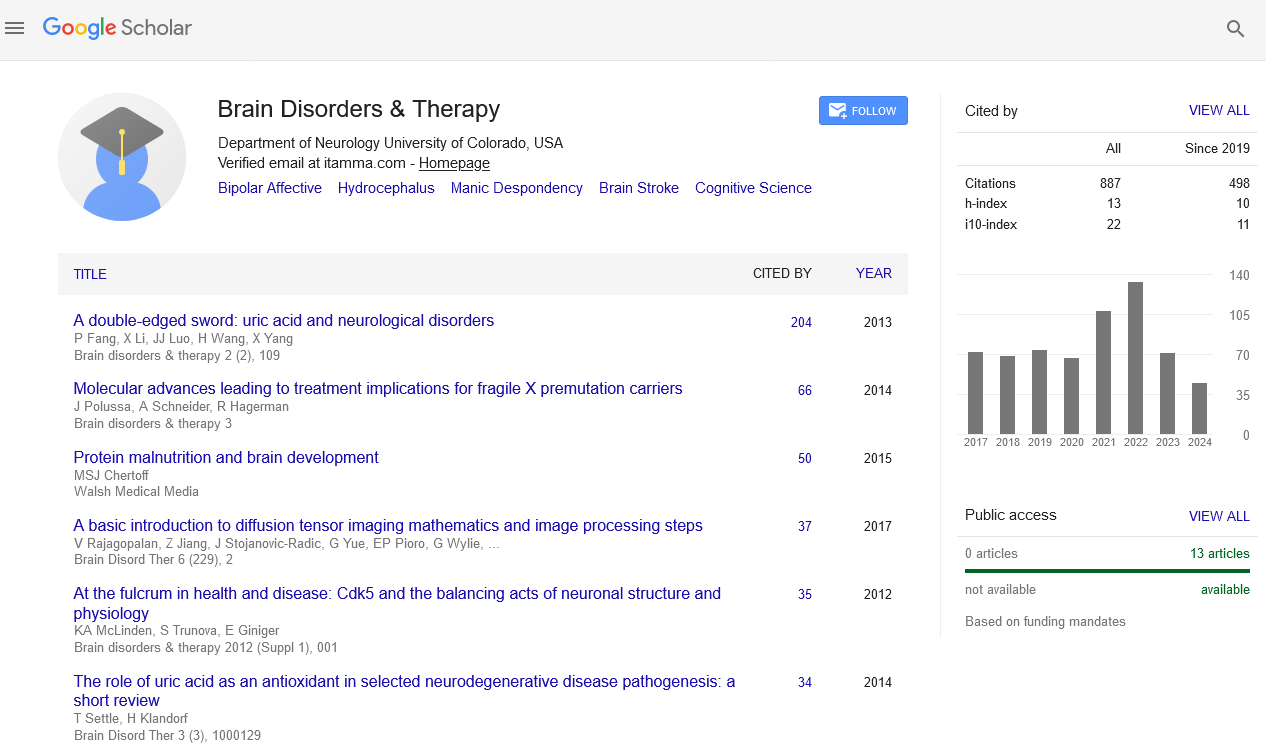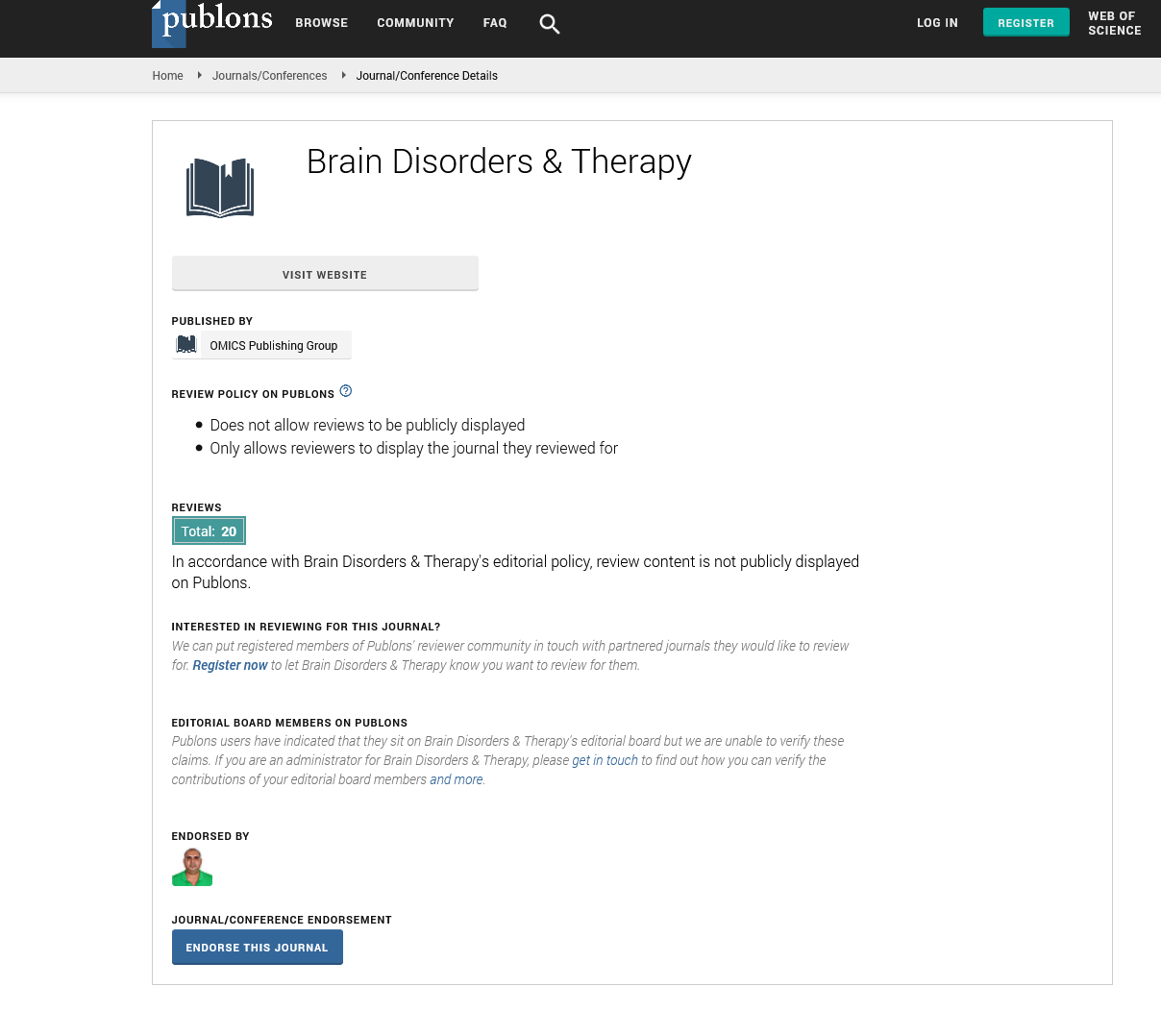Indexed In
- Open J Gate
- Genamics JournalSeek
- JournalTOCs
- RefSeek
- Hamdard University
- EBSCO A-Z
- OCLC- WorldCat
- Publons
- Geneva Foundation for Medical Education and Research
Useful Links
Share This Page
Journal Flyer

Open Access Journals
- Agri and Aquaculture
- Biochemistry
- Bioinformatics & Systems Biology
- Business & Management
- Chemistry
- Clinical Sciences
- Engineering
- Food & Nutrition
- General Science
- Genetics & Molecular Biology
- Immunology & Microbiology
- Medical Sciences
- Neuroscience & Psychology
- Nursing & Health Care
- Pharmaceutical Sciences
Short Communication - (2025) Volume 14, Issue 1
Brain Remodeling Post-Stroke: Advancing Recovery through Imaging and Targeted Rehabilitation
Hannah Dubois*Received: 19-Feb-2025, Manuscript No. BDT-25-28914; Editor assigned: 21-Feb-2025, Pre QC No. BDT-25-28914 (PQ); Reviewed: 07-Mar-2025, QC No. BDT-25-28914; Revised: 14-Mar-2025, Manuscript No. BDT-25-28914 (R); Published: 21-Mar-2025, DOI: 10.35248/2168-975X.25.14.291
Description
Stroke is a leading cause of adult disability globally, resulting in significant impairment of motor, sensory, cognitive and emotional functions. The brain's ability to remodel itself after injury—termed brain remodeling or neuroplasticity—is essential to the recovery process. This short communication reviews key mechanisms underlying brain remodeling post-stroke and highlights advances in neuroimaging that have enhanced our understanding of these complex processes [1]. Brain remodeling involves a series of cellular and molecular events initiated in response to ischemic injury [2]. Neurogenesis, the formation of new neurons, occurs predominantly in the sub-ventricular zone and hippocampus and evidence suggests that newly generated neurons may migrate to injured areas to aid repair. Synaptogenesis, or the formation of new synaptic connections, facilitates re-establishment of neural networks disrupted by stroke. Axonal sprouting allows surviving neurons to extend new projections to compensate for lost pathways. Angiogenesis, the formation of new blood vessels, supports the metabolic demands of regenerating tissue. Glial cells, especially astrocytes and microglia, play dual roles—both protective and detrimental—in remodeling by modulating inflammation and extracellular environment [3]. The exchange among these mechanisms is complex and influenced by factors such as the severity of ischemia, patient age and comorbidities like diabetes or hypertension.
Functional plasticity following stroke refers to the brain's capacity to reorganize activity patterns to recover lost functions. Perilesional areas in the affected hemisphere often show increased excitability and connectivity, compensating for damaged regions. Moreover, the contralesional hemisphere can participate by recruiting homologous networks. This bilateral engagement is especially prominent in the early phases of recovery. However, persistent overactivation of the contralesional side may contribute to maladaptive plasticity, inhibiting optimal restoration of function [4]. Understanding the delicate balance between adaptive and maladaptive plasticity is essential for optimizing rehabilitation strategies.
Neuroimaging techniques have revolutionized the study of brain remodeling in humans. Functional Magnetic Resonance Imaging (fMRI) allows mapping of brain activation patterns during task performance, revealing shifts in network engagement post-stroke [5]. Diffusion Tensor Imaging (DTI) provides insights into white matter integrity and tract reorganization by measuring diffusion anisotropy along axonal fibers [6]. Positron Emission Tomography (PET) enables assessment of cerebral metabolism and receptor binding changes during recovery. Longitudinal studies combining these modalities have demonstrated dynamic structural and functional reorganization correlating with clinical improvement.
For example, fMRI studies frequently report increased activity in secondary motor areas such as the premotor cortex and supplementary motor area in stroke patients, supporting their role in compensatory motor control. DTI metrics have identified microstructural remodeling in critical pathways like the corticospinal tract, which directly impacts motor function recovery. PET imaging of glucose metabolism has revealed metabolic normalization in peri-infarct regions during rehabilitation [7]. These imaging biomarkers are increasingly used to predict recovery potential and guide individualized therapeutic interventions.
Despite these advances, challenges remain in translating mechanistic knowledge into effective clinical therapies. Rehabilitation approaches such as Constraint-Induced Movement Therapy (CIMT) control principles of use-dependent plasticity but require careful patient selection and timing. Neuromodulation techniques like Transcranial Magnetic Stimulation (TMS) and transcranial Direct Current Stimulation (tDCS) aim to enhance beneficial plasticity by modulating cortical excitability [8]. Robotics and virtual reality provide additional avenues to engage patients in intensive, task-specific training. Integrating neuroimaging data to personalize these treatments holds potential but necessitates further validation [9]. Maladaptive plasticity poses a significant hurdle. Excessive reliance on contralesional networks may lead to inefficient motor control and limit functional gains. Similarly, abnormal synaptic reorganization can result in spasticity and chronic pain. Future research should focus on identifying biomarkers distinguishing adaptive versus maladaptive remodeling and developing interventions that selectively promote beneficial changes [10].
Conclusion
In conclusion, brain remodeling after stroke is a multifactorial process involving coordinated cellular, molecular and networklevel changes. Neuroimaging advances have provided unprecedented insights into the spatiotemporal patterns of remodeling and their relationship with recovery outcomes. Although considerable progress has been made, fully harnessing brain plasticity to improve post-stroke rehabilitation remains a complex challenge. Continued interdisciplinary research integrating mechanistic studies with cutting-edge imaging and therapeutic innovation is essential. Ultimately, a deeper understanding of brain remodeling will facilitate the development of personalized strategies to maximize functional recovery and improve quality of life for stroke survivors.
References
- Wang J, Zhou J, Zhu J, Sheng J, Jiang R, Zhang X. Brain remodeling in stroke patients: A comprehensive review of mechanistic and neuroimaging studies. Behav Brain Res. 2025;486:115548.
[Crossref] [Google Scholar] [PubMed]
- White BC, Sullivan JM, DeGracia DJ, O’Neil BJ, Neumar RW, Grossman LI, et al. Brain ischemia and reperfusion: Molecular mechanisms of neuronal injury. J Neurol Sci. 2000;179(1-2):1-33.
[Crossref] [Google Scholar] [PubMed]
- Ausprunk DH, Folkman J. Migration and proliferation of endothelial cells in preformed and newly formed blood vessels during tumor angiogenesis. Microvasc Res. 1977;14(1):53-65.
[Crossref] [Google Scholar] [PubMed]
- Amengual JL, Münte TF, Marco-Pallarés J, Rojo N, Grau-Sánchez J, Rubio F, et al. Overactivation of the supplementary motor area in chronic stroke patients. J Neurophysiol. 2014;112(9):2251-63.
[Crossref] [Google Scholar] [PubMed]
- Northcott S, Moss B, Harrison K, Hilari K. A systematic review of the impact of stroke on social support and social networks: Associated factors and patterns of change. Clin Rehabil. 2016;30(8):811-31.
[Crossref] [Google Scholar] [PubMed]
- Martín-Noguerol T, Barousse R, Wessell DE, Rossi I, Luna A. Clinical applications of skeletal muscle diffusion tensor imaging. Skeletal Radiol. 2023;52(9):1639-49.
[Crossref] [Google Scholar] [PubMed]
- Weber WA, Schwaiger M, Avril N. Quantitative assessment of tumor metabolism using FDG-PET imaging. Nucl Med Biol. 2000;27(7):683-7.
[Crossref] [Google Scholar] [PubMed]
- Elder GJ, Taylor JP. Transcranial magnetic stimulation and transcranial direct current stimulation: treatments for cognitive and neuropsychiatric symptoms in the neurodegenerative dementias? Alzheimers Res Ther. 2014;6:1-1.
[Crossref] [Google Scholar] [PubMed]
- Godlewska BR. Neuroimaging as a tool for individualized treatment choice in depression: the past, the present and the future. Curr Behav Neurosci. 2020;7:32-9.
- Pullamsetti SS, Tello K, Seeger W. Utilising biomarkers to predict right heart maladaptive phenotype: A step toward precision medicine. Eur Respir J. 2021;57(4).
[Crossref] [Google Scholar] [PubMed]
Citation: Dubois H (2025). Brain Remodeling Post-Stroke: Advancing Recovery through Imaging and Targeted Rehabilitation. Brain Disord Ther. 14:291.
Copyright: © 2025 Dubois H. This is an open access article distributed under the terms of the Creative Commons Attribution License, which permits unrestricted use, distribution, and reproduction in any medium, provided the original author and source are credited.


